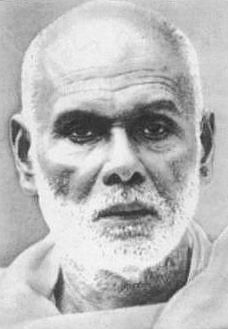Padmanabhan Palpu
Padmanabhan Palpu | |
|---|---|
 | |
| Personal | |
| Born | 2 November 1863 |
| Died | 25 January 1950 (aged 86) |
| Known for | Kerala reformation movement and medical services |
| Organization | |
| Philosophy | Social equality |
Padmanabhan Palpu (2 November 1863 – 25 January 1950) was a physician from the Kingdom of Travancore who served as a chief medical officer of Mysore State.
He led social activism for the Ezhava community in Kerala and a led a movement for social equality. In 1903, he founded the Sree Narayana Dharma Paripalana Yogam (Society for the Propagation of the teachings of Sree Narayana Guru), whose first president was Narayana Guru, who sought an end to the caste system and preached his concept of "one caste, one religion, one god." His son Nataraja Guru became a successor of Narayana Guru. Palpu has been described as the "political father" of the Ezhavas. Sajil Sreedhar wrote a novel titled Athmasourabham based on the life of Dr.Palppu which was published in Yoganadam magazine owned by SNDP Yogam.
Early life and education
Palpu was born in
Palpu, who had learned English from a Eurasian tutor from the age of 12, attended
Mysore state service
Palpu became the chief medical officer of Mysore State. His salary was more than the salary of Travancore Diwan.[
Social activism
Becoming aware of the importance of education as a method of socio-economic advancement and also as means to improve health and hygiene,
Palpu was among those who attempted to use data from the
In practice, when some Ezhava graduates applied for government jobs soon after Shungrasoobyer's announcement, they were told that there were no vacancies. Thus, later in 1896, Palpu again took leave from his job to campaign in Travancore.[4] He organised a petition that attracted the signatures of 13,176 Ezhavas. This letter was presented to the Maharajah of Travancore and demanded their right to admission in schools run by the colonial government and access to employment in public service.[1][13] The bar from education in government schools was noted as being inequitable given their claim that the Ezhavas paid more taxes than any other community in the kingdom. The petition was published in the Madras Mail in September of that year.[4] This use of petitions as a vehicle to achieve a coalescence of communal consciousness and cause change was one of the first examples of such in the kingdom, where the ritually superior Brahmin groups held the majority of posts available in the administration of the state.[10]
Personal life
Palpu had a son, commonly known as Nataraja Guru.[14]
Legacy
Dr. Palpu College of Arts and Science in Pangode is named after him. Palpu influenced the political philosophy of C. Kesavan.[15]
References
- ^ ISBN 978-0-415-67167-5.
- ISBN 978-0-520-04667-2.
- ^ ISBN 9788178241128.
- ^ .
- ^ ISBN 978-81-7648-170-0. Retrieved 15 May 2023.
- ISBN 978-81-7022-282-8. Retrieved 15 May 2023.
- ISBN 978-0-19-829204-3. Retrieved 15 May 2023.
- ^ "Palpu: A doctor, activist who fought the plague and the caste system". 21 August 2020.
- ^ ISBN 978-1-136-78945-8. Retrieved 15 May 2023.
- ^ ISBN 9781139449083.
- ISBN 978-8-13171-818-6.
- ISBN 9780253354730.
- ISBN 9788131718186.
- ISBN 9788170990949.
- ISBN 9788131718186.

